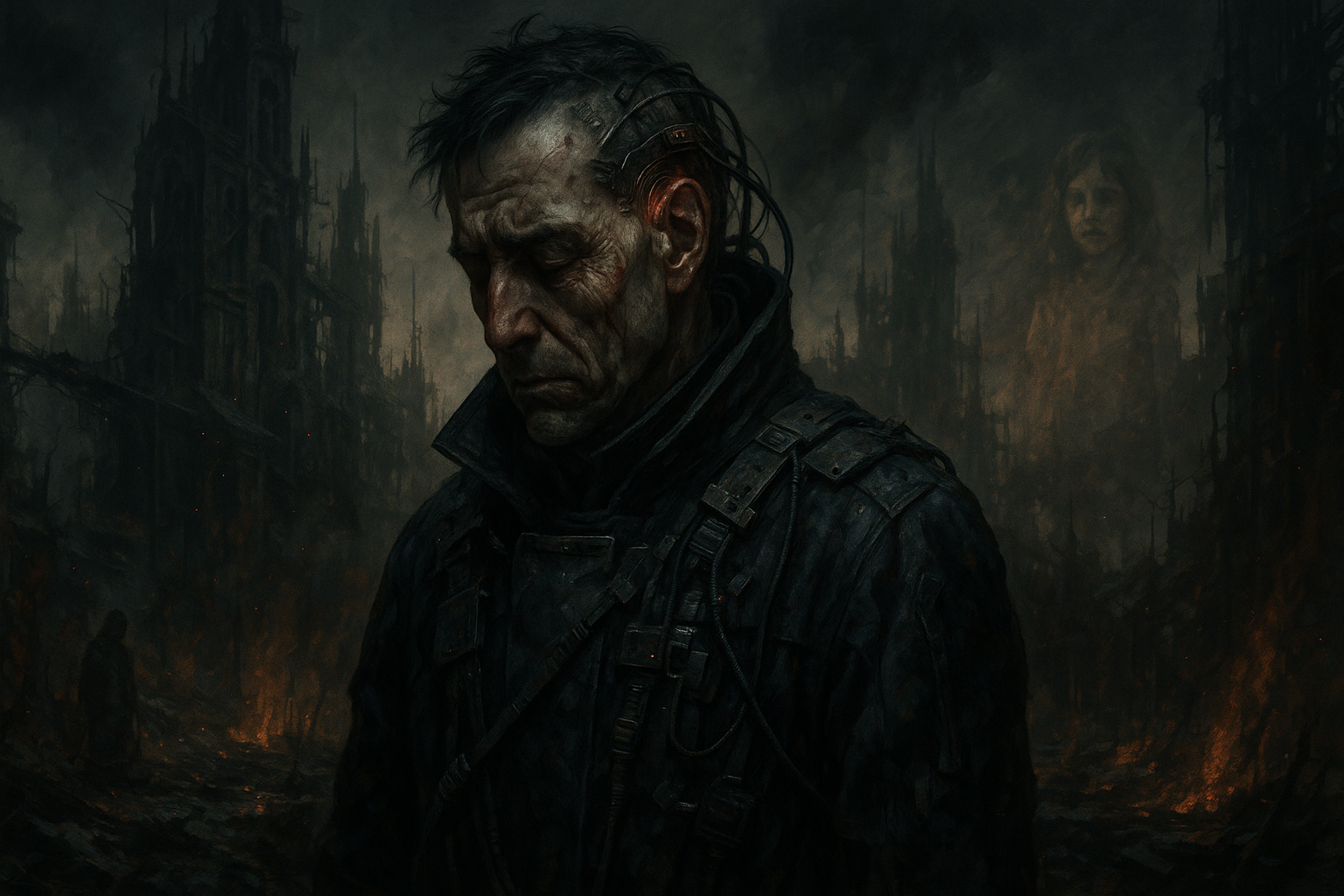Sonohokan Guilt Syndrome
Journal of Post-Fall Medicine
Vol. 17, Issue 4 | December 113 SE | Camp Hope Medical Council Approved
Case Study: Sonohokan Guilt Syndrome in a Senior Watch Officer
Author: Dr. Maren Isolde, Department of Neurotrauma, Camp Hope General
Reviewed by: Dr. Kael Tormund (Church of Hope, Psychiatry Division) & Dr. Parsa Giel (Department of Awakened Studies)
Abstract:
Sonohokan Guilt Syndrome (SGS) is a complex neuroemotional condition manifesting in subjects—primarily Town Watch officers and frontline medics—who have not directly experienced the traumas they recall. This case study presents a well-documented occurrence of SGS in a high-ranking Watch Officer, exploring possible psychic, environmental, and neurochemical etiologies.
Subject:
Designation: Officer Elias V. Orland
Age: 41
Rank: Detective, Town Watch
Service Record: 22 years (4 years as Officer, 12 years as Sergeant, 6 years as Detective)
Notable Assignments: Burngate Collapse Response (96 SE), New Mercy Riots (102 SE), Eastern Quarantine Wall Incident (109 SE)
Presenting Symptoms:
Officer Orland was referred for evaluation following erratic behavior during a missing persons investigation. Symptoms included:
- Sudden onset of hyperemotional response during routine questioning
- Recitation of names and events unrelated to current casework
- Sleep disruption (night terrors, audible speech during sleep)
- Auditory hallucinations of "pleas for help" and "the sound of fire under stone"
- Compulsive confession of crimes he did not commit ("I let them burn. I shut the door.")
Neurological Findings:
- No intracranial lesions or infections
- Blood-nanite levels within acceptable post-Fall thresholds
- Theta wave anomalies during sleep consistent with post-traumatic memory consolidation
- No signs of parasitic neuroburden or standard psychosis indicators
Psychological Evaluation:
While Orland displays classic post-traumatic stress markers, the memories he describes involve operations or events he did not participate in. One such episode, involving the alleged execution of an infected child behind the old pharmacy depot, matches nearly word-for-word with the confession of a deceased Watch Sergeant logged in 89 SE.
During regression therapy with a Church-certified medium, Orland entered a fugue state and recited over a dozen names. Cross-reference confirmed eight were civilians lost during the Burngate Collapse—victims whose names were never released to the public.
Discussion:
Current hypotheses for SGS include:
- Psychic Residue Absorption
Proximity to Awakened or Others during emotionally intense moments may leave behind a “resonance” of memory—especially in areas with high trauma saturation, such as battle sites, medical triage centers, or execution grounds. - Sonohokan Field Contamination
A theoretical psychic miasma left behind from the initial emergence of Others in the early decades of the Fall. Some Doctors propose that trauma itself may have become infectious through transmemetic vectors. - Collective Memory Cross-Bleed
A fringe theory held by a minority of Scribes suggests that in a world shaped by collapse and desperation, the collective unconscious has thinned. Orland may be tapping into an ancestral memory lattice—a side effect of prolonged exposure to high-fidelity trauma records, both textual and oral. - Neurochemical Glitch from Bio-Reconstruction
Orland underwent facial reconstruction surgery in 98 SE using TL4 neural mesh. Doctors have raised concerns that experimental regen-mesh might disrupt memory filtration or entangle the patient’s neuroelectrical field with that of previous mesh users.
Treatment & Outcome:
Initial treatment with guided memory realignment and trauma silencing nanodrips was ineffective. Transfer to the Church's Sanctuary of Still Waters for supervised prayer therapy and sensory deprivation provided temporary relief. Symptoms returned following proximity to the Eastern Wall incident site.
Orland remains in voluntary seclusion within the upper levels of the Town Watch Bastion. He continues to provide valuable insights into cold cases—sometimes predicting details not publicly disclosed. Ethical debate continues over whether this information should be used in official investigations.
Excerpt from Session Log 113.4.9:
The smoke is always fresh. The names come like heat. I never held that little girl. But I remember the mole on her cheek and how she cried my name before the flames took her. I wasn’t there. I shouldn’t know that. But I do.
Conclusion:
SGS may represent a previously unknown intersection between trauma, psychic exposure, and technological interference. Until a reliable treatment protocol is established, the condition presents not only a mental health crisis but also a theological and ethical conundrum for Camp Hope’s Watch, Doctors, and Scribes.




Comments